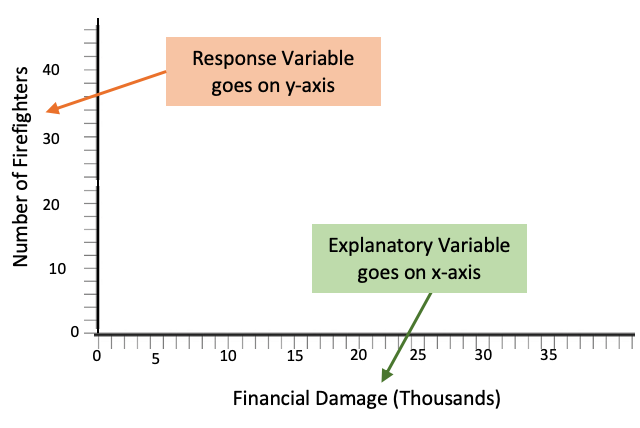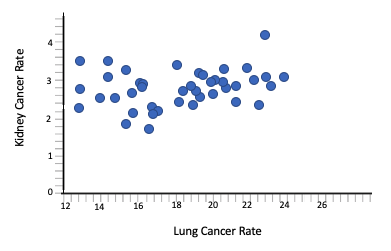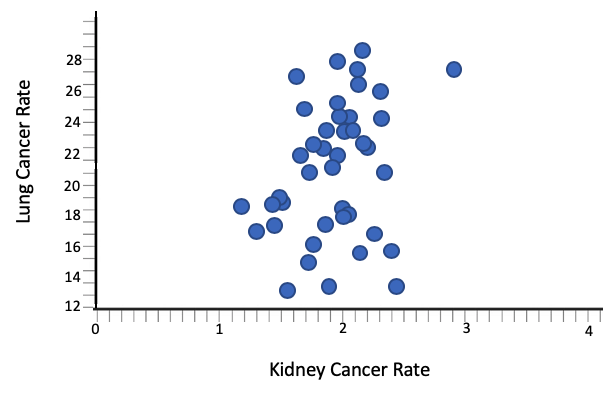Table of Contents |
When examining the relationship between two variables, you often want to see if there's an effect that one has on the other. Does one variable being high or low help to explain why another variable would be high or low? Why would something being high or low cause one to increase or decrease? It doesn't necessarily have to cause the increase or decrease; it just has to be associated with an increase or decrease in the other.
An explanatory variable is a variable that might cause an effect; it is the thing that we are looking at to cause something to happen. The response variable is the variable that will reflect that effect.
On a graph, the explanatory variable will go on the horizontal x-axis, and the response variable will go on the vertical y-axis.
IN CONTEXT
A fire breaks out, and you want to determine the relationship between the number of firefighters at the fire and the financial damage caused by the fire. There's a positive association between these two because as one goes up, the other goes up. Which one helps to explain the other?
The financial damage caused by the fire will help explain the number of firefighters at the fire. It's important to know that it doesn't work the other way—meaning, if there are more firefighters, there will be more damage.
They are associated, though, with each other. Because the severity of the fire is going to cause more damage, it's also going to cause more firefighters to arrive on the scene.
When you put it on the graph, the explanatory variable, financial damage, goes on the x-axis. The response variable, number of firefighters, goes on the y-axis.

| Example | Explanation |
|---|---|
| Maximum Daily Temperature and Cooling Costs |
Explanatory: Maximum Daily Temperature Response: Cooling Costs The maximum daily temperature is going to cause a change in cooling costs. The higher the temperature, the more it will cost to cool your house. |
| Rent and Square Footage of an Apartment |
Explanatory: Square Footage of an Apartment Response: Rent The square footage is going to cause a change in the cost of the rent. As the square footage of an apartment increases, the rent of the apartment will also go up. |
| SAT Verbal Score and SAT Math Score | These two variables may be associated, meaning someone who does well on the verbal portion of the test may also do well in the math portion. Here, however, one variable does not necessarily cause a change in the other, so we would not assign either as the explanatory variable, and you can choose any axis for the variables. |
Occasionally, there is not a clear explanatory variable. What happens then?
IN CONTEXT
Cancer rates for kidney and lung cancer is known for the 50 states in the U.S. You don't think that one type of cancer causes the other type. You don't really even think that an increase in one corresponds to an increase or decrease in the other. The types of cancer don't seem to be related.
So, in this case, when you graph them, it really doesn't matter which one is talking about being the explanatory or response variable. They can be graphed either way.

OR 
Source: THIS TUTORIAL WAS AUTHORED BY JONATHAN OSTERS FOR SOPHIA LEARNING. PLEASE SEE OUR TERMS OF USE.